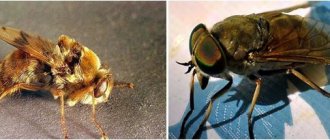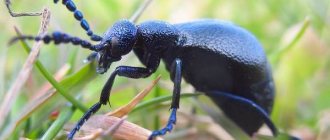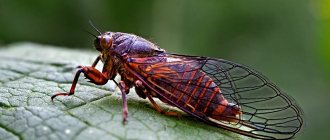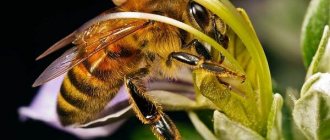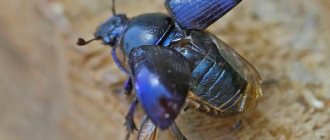General information
Cockroaches (or cockroaches) are a detachment of insects from the superorder Cockroaches. According to archaeologists, representatives of the cockroach order lived on Earth more than 300 million years ago.
Today, more than 4,600 species of cockroaches are known. Despite the fact that cockroaches are moisture- and heat-loving insects, their habitat is almost the entire planet. The exception is Antarctica, where the mustachioed pests have not yet reached. Most cockroaches live in the wild, living in meadows, swamps, forests and even underground. But some of the representatives of the cockroach order are synanthropes, that is, their way of life is directly related to humans, and they most often live in human housing.
Spread diseases
Cockroaches can be dangerous to people, as they are carriers of dysentery and worms.
Meet the Cockroaches group
Type: Arthropods. Class: Insects. Order: Cockroaches. This is the scientific systems engineering of creatures that are feared and hated by most of the population. In general, the general human hostility towards cockroaches is quite understandable and justified. After all, these insects spoil books and food, destroy house plants, and carry a number of dangerous diseases (for example, dysentery).
Where the word “tarasik” came from in Russian is unknown. According to one version, it comes from the Chuvash tar aqan (“runaway”). A word similar in number (tarqan) also exists in Turkic languages, but it is translated like “dignitary”.
Cockroaches are incredibly mobile insects that are primarily nocturnal. They prefer to settle in well-moistened and fairly warm places. In most cases they feed on animal and plant remains. Legends are made about the phenomenal endurance of these insects. Honestly, they are resistant to radiation, but not as much as fruit flies, for example.
It should be noted that cockroaches are not perceived with hostility by people everywhere. Si, in some regions of the planet they are eaten or used as medicine. In Ancient Rus' they didn’t even think about fighting cockroaches. The presence of these insects in the house was meanwhile considered a sign of wealth and well-being.
Appearance of insects
The sizes of representatives of the cockroach order vary from 4-6 mm to 8 - 10 cm. Color can vary from red to black, passing through all shades of brown. But the appearance and body structure of all cockroaches are similar. Character traits:
- the body is elongated, oval, slightly flattened;
- rather large head in the shape of a rounded triangle;
- thin long legs (since cockroaches are insects, all representatives of the order have 3 pairs of legs);
- long mustache.
The body of insects is covered with a chitinous membrane.
Uninvited guests
The structural features of cockroaches and physiology are determined by their favorite habitat - human habitation. There are all comfortable conditions here: warmth, water and darkness.
A structural feature of the cockroach order is their omnivorous nature. Their favorite treats are bread, sugar, cereals, vegetables and fruits. But if these products cannot be included in the diet, cockroaches can eat paper, fabric, glue, book binding, and any garbage. Moreover, the parasites do not completely eat the product, but bite it and look for something tastier.
Getting rid of cockroaches is often quite difficult. They get clogged into the smallest cracks, cracks, cavities in wallpaper or ceramic tiles. Therefore, all hard-to-reach places will have to be treated with chemicals.
Structure of a cockroach
Interestingly, the body structure of the cockroach has remained almost unchanged for millions of years. That is, this insect was created almost perfect. The body of cockroaches consists of a head, thorax and abdomen. On the head of the cockroach there is a gnawing mouthpart, covered with a shield, and large compound eyes are located on the sides. Some cockroaches have an additional pair of simple vision organs.
Only a few exotic species of cockroaches can hiss, whistle, or even make sounds that resemble a whisper. But, for example, an ordinary Prussian does not even have the organs necessary for this.
Breast
The chest consists of three segments, each of which has a pair of legs. Also on the chest part there are wings and elytra. The anterior segment of the breast is most often much larger than the other two and has a lighter shade.
Wings
Two pairs of thin wings and hard elytra are attached to the chest, protecting the wings and abdomen. Despite the presence of wings, only one type of cockroach can fly; all the others use them to accelerate while moving or to make the fall slower and smoother. But the main purpose of the wings is to show readiness for mating during mating games. By the way, males have much longer wings than females.
Limbs
A cockroach has the same number of legs as other insects, but their structure can be called unique. Each tarsus consists of 5 segments. The top four have pads, and the fifth has a sucker and claws. Thanks to this structure, the insect moves with ease on both horizontal and vertical surfaces.
The maneuverability and speed of movement of the insect is explained by the fact that each pair of legs has its own characteristics:
- prothoracic - the shortest, play the role of a brake;
- mid-thoracic - can move in different directions;
- metathoracic - the longest, play a major role in moving forward, and are also used for jumping.
Cockroach
A cockroach runs at a speed of 3.5 - 4 km/h. Considering its size, this is a very good indicator. This speed is achieved by one of the fastest animals on the planet – the cheetah.
Abdomen
The abdomen consists of 11 segments, the tenth of which covers the anus, and the eleventh contains the cerci - rudimentary processes that do not serve any function. In females, the abdomen is much larger, since the ovipositor is located in it.
Internal structure of a cockroach
The internal structure of a cockroach is quite complex and has a number of distinctive abilities. In particular, anatomy can explain such an amazing property of an insect as the ability to live for a long time without a head.
Digestive system
In the mouth of a cockroach there are jaws designed for holding and chewing food, as well as salivary glands that produce saliva, which softens everything that gets into the mouth. Next, the food enters the crop, where it is partially digested, then into the stomach and, finally, into the intestines. Immediately behind the mouth opening, the foregut begins, in the buccal chamber of which there are 6 teeth for additional grinding of food.
All cockroach excrement is excreted through the anus. Both feces and liquid secretions are sent there, that is, urine, which is collected throughout the body using special channels.
Circulatory system
Cockroaches have an open circulatory system. This means that blood (it is white in these insects) moves freely throughout the body, passing through all internal organs. The blood circulation rate is very low, so cockroaches are sensitive to temperature changes.
Respiratory system
The respiratory system of a cockroach is a structure independent of the brain. On the sides of the abdomen there are small holes - spiracles (10 on each side). A system of tubes (tracheoles) extends from them, which connect to six larger tracheal trunks. The tracheal system runs throughout the body and supplies the internal organs with oxygen. By blocking the spiracles, the cockroach may not breathe for up to 40 minutes.
Nervous system
The nervous system of a cockroach consists of 11 nerve nodes (ganglia). The two largest of them are in the head, responsible for the functions of the whiskers and vision. The thoracic nodes (there are only 3 of them) are responsible for the muscles of the head, thoracic region, legs, wings and oral apparatus. The remaining 6 ganglia of the central nervous system are located in the abdomen, the most recent of which controls the genitals and hearing organs, located next to the anus. A whole system of nerve fibers departs from the ganglia, providing innervation to all organs of cockroaches.
Reproductive system
The reproductive system of cockroaches is quite complex. For a male it is:
- testes;
- utricular gland;
- seminal vesicles;
- external genital plate.
In females:
- ovaries;
- oviducts connected to the vagina;
- the genital chamber in which the eggs are located;
- ovipositor.
Special glands produce a secretion to form the ootheca (the capsule in which eggs develop).
Lifestyle and behavior
Cockroaches hide during the day and come out of their hiding places at night. This applies to both insects living near humans and those living in the wild. It is believed that cockroaches are afraid of light, but few can answer the question of why this happens.
The colony
In fact, insects are afraid not of the light itself, but of the feeling of insecurity and danger that it brings. But if cockroaches were noticed in the daytime, this means that the colony has grown too much, the insects no longer have enough food and they have forgotten about the fear of light, going in search of at least some food.
The characteristics of cockroaches include amazing endurance and vitality. Many scientists claim that these are one of the few creatures on Earth that can survive a nuclear war.
Interesting Facts
- In a second, an insect can run 75 cm.
- Cockroaches are very maneuverable - they can change the trajectory of their movement up to 25 times per second.
- The insect can live without a head for 10 days, a month without food and a week without water.
- Cockroaches breathe with their whole body and are able to hold their breath for 40 minutes.
- A person can survive exposure to 500 rads, while a cockroach can withstand 6400 rads.
- During life, the insect releases gases every 15 minutes, and after death it continues to release them for another 18 hours.
- If a cockroach is turned on its back, it will never turn back and will lie there until it dies from thirst or hunger.
- Cockroaches easily move from one country to another and immediately take root in a new place.
The black cockroach is distributed throughout Europe and is found in close proximity to human habitation.
Features of reproduction
In order to bear offspring, a female cockroach only needs to mate with a male once. After this, seminal fluid remains in the female’s body, which is enough to lay eggs throughout her life.
Cockroaches go through three stages of development:
- egg;
- nymph (larva);
- imago (adult).
The egg stage lasts 3-4 weeks, after which a small white larva is born. Very soon the outer cover of the larva becomes stronger and darkens. Small cockroaches look like adult insects only without wings. During the formation period, the nymph experiences up to 6 molts, after each of which the larva becomes more and more similar in structure to an adult cockroach. The nymph stage lasts, depending on the type of insect, from 3-4 weeks to 2-4 years. An adult is a sexually mature insect, ready to mate.
How to get rid
People who first encounter insects in their homes always wonder: “ Where do black cockroaches come from? » There may be several options:
- crawled from neighbors or from the basement, especially when chemical insect control is going on there;
- brought a sexually mature fertilized female with things from friends, relatives or from a trip;
- left over from past unscrupulous tenants;
- they brought an ootheca with eggs from the entrance on shoes.
How to get rid of black cockroaches - five proven methods:
- Call chemical pest control specialists to treat all areas where black cockroaches may be present. This method is the fastest and most effective, but requires the temporary relocation of all family members to other housing, including pets.
- Strongly cool the room for several days (this method is permissible in winter at sub-zero temperatures and will only get rid of adult insects, but will not protect against subsequent hatching of young animals from deposited cocoons). Accordingly, the supply of cold air should be long-lasting, which will require a change of housing for all household members and house plants.
- Purchase a suitable insecticide for black cockroaches (when purchasing, you should pay attention to the instructions, contraindications and study the admissibility of use in a home with pets and small children).
Types of industrial products:
- Trap houses (for large insects) contain an intestinal poison bait that kills adult cockroaches and nymphs.
- Gels are highly effective products with a semi-liquid consistency and are attractive to all types of cockroaches because they contain water and food at the same time (mixed with toxic ingredients).
- Sprays are a convenient means for treating accumulations of insects in corners and narrow crevices; they instantly kill several dozen individuals.
- Chalks and powders (dusts) of contact action (the poison is carried on the legs of cockroaches and destroys all stages of development. Efficiency depends on the concentration of active components, most often powders give a positive result when the number of cockroaches is small.
- Take advantage of modern technologies:
- The ultrasonic repeller works on the principle of influencing the senses of black cockroaches (light and high-frequency waves), stimulating the nervous system, which forces them to leave the given home.
- An electronic trap destroys insects that come to the bait with a discharge of current. It is necessary to install several of them, and also limit the access of pets (especially small rodents).
- Use traditional methods of struggle:
- Balls with boric acid (the most effective method, requiring preparation). This bait is made from the favorite products of cockroaches with an admixture of pharmaceutical boric acid. A well-known recipe for balls: boil 1 chicken egg and potatoes, mix them with flour and vegetable oil, adding boric acid (all proportions are taken by eye). From the resulting mass, form small balls the size of a hazelnut kernel and place them in places where unwanted guests often appear. Cockroaches are great at eating treats without noticing the medicinal component in it, and in the end it kills them. This product is completely safe for pets.
- Laying out fresh bay leaves, the aroma of which insects do not like.
- Making traps from paper tape. Small houses stick the cockroaches and they cannot get out, dying of hunger.
What do they eat?
In the process of evolution, cockroaches have adapted to the most extreme living conditions, and also learned to eat any food, even seemingly inedible at first glance. Among the foods that a cockroach can eat:
- spoiled food;
- plant leaves, fruits, vegetables;
- paper;
- soap;
- fabric, leather, wood.
Even though insects are omnivores, they still have food preferences. So, what do cockroaches love most:
- sugar;
- sweets;
- baking;
- meat and meat products.
Dinner
In case of acute food shortage, cockroaches can attack people, biting off pieces of skin, and also eat dead relatives.
Habitat
There are more than 4 thousand species of these insects in nature. Despite such diversity, the structure of cockroaches and their lifestyle are similar: they all love warmth and moisture. Therefore, most species live in the tropics. Some species have adapted to the cold climate of the northern regions, where they feed on moss and lichen. There are also known cave cockroaches that have lost the ability to see.


